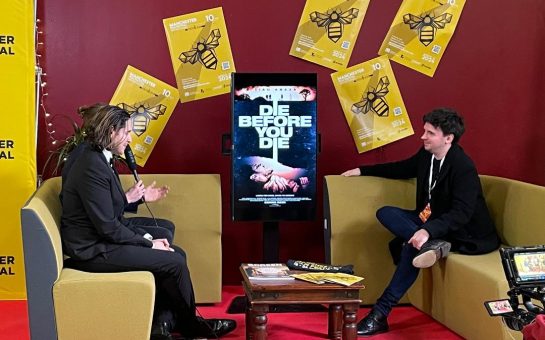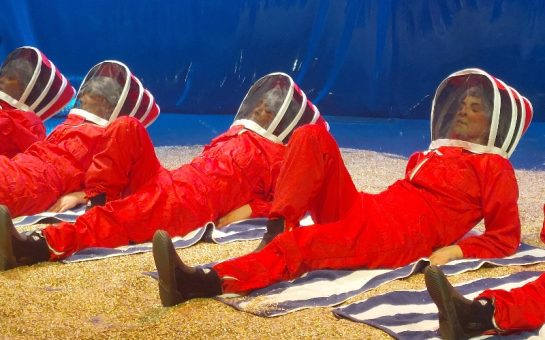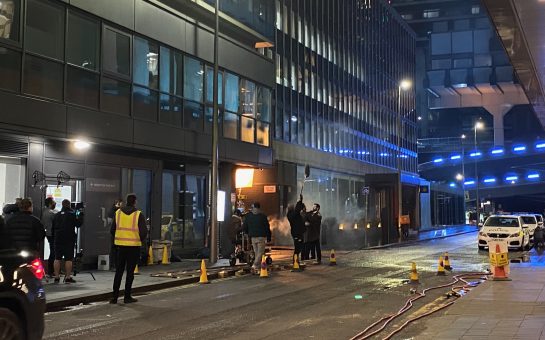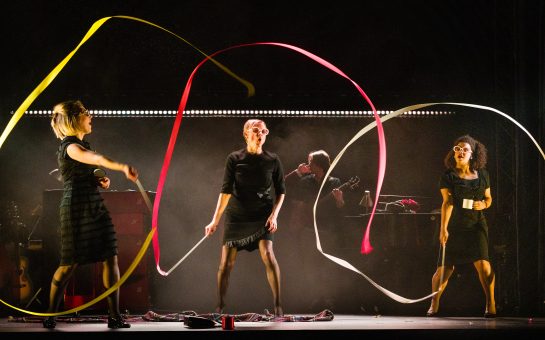Gurinder Chadha’s Viceroy’s House is an ambitious project to say the least.
Her aim – to balance the turmoil and geopolitical upheaval of partition with an accessible plot in the tradition of British ‘upstairs downstairs’ drama – is no small task.
Speaking at HOME ahead of the film’s UK release, she explained it’s a project that has been on her mind for many years.
The film was inspired back in 2006 by her journey to Pakistan on the BBC show Who Do You Think You Are?.
There, she discovered more about her family’s history in India and Pakistan, and their stories from partition as part of the biggest mass migration in human history – as 14 million Hindus, Sikhs and Muslims were displaced from their homes.
“I had grown up under the shadow of partition for a long time,” she explained.
“I didn’t have an ancestral homeland as such, my family were from the Punjab region of eastern Pakistan but before it was Pakistan. Until Who Do You Think You Are? I had never actually travelled there before.”
The movie stars Hugh Bonneville and Gillian Anderson, alongside standout performances from Huma Qureshi and Manish Dayal, and clearly sets out to render the complexity of this shockingly under-taught period of British-Indian history accessible to a wide international audience.
It is an indictment of the British film industry that 25 years ago, when Bhaji on the Beach was released, Chadha was the first Asian woman to make a film in Britain, and now a quarter-century later she remains the only Asian woman making feature films for a living in Britain.
“Under those circumstances, when I do get the opportunity, it’s very important that I don’t just make a small art-house film for experts. For me, I have to think ‘right, I want every single person in the world to see this film and how am I going to do that?’
“So I do attempt to make them accessible, populist if you like. It’s important for me that young people are able to follow the story, because people who might want a more detailed already know the history.
“The film doesn’t just talk to the British and Indians and Pakistanis; the idea is that it’s much bigger than that.”
With this in mind, Chadha’s directorial decision to blend her actors with archival footage throughout the picture provided a bridge between the political history and human stories of her characters, portraying accurate history while avoiding gratuitous violence in recreations of the most shocking and riotous moments of partition.
“We started by thinking ‘how do we tell this story in a way that people will want to see it?’ and that’s where the upstairs downstairs idea comes from. I’ve grown up with the epics of David Green and Richard Attenborough and I thought this is my opportunity to make a film on a huge canvas like that, and I wanted to make a film that was beautiful to look at as well.
“For me that genre of big British epic costume drama was the way I wanted to entice the world. It allowed us to think about the politics upstairs, with Mountbatten negotiating with the leaders, but also looking at the impact of those decisions on the people downstairs.”
With a film about such a complex and delicate subject, a subject that has affected multiple generations of Indian and Pakistani people, the fear and risk of being overly-political in the film’s story-telling is significant.
The weight of responsibility – to her family, to India, to Pakistan, and indeed to history – fell heavily on Chadha’s shoulders during the shooting of the film and she confesses that there were moments when she worried the project was too great a mountain to climb.
“There were times when I was very scared and didn’t want to pursue it – I was taking on big themes and big figures from history. I knew I would have the Churchill historians after me and I was worried that Pakistanis might be offended by what the film was saying and Indians might not want to go there either.
“I was risking upsetting quite a lot of people and that was worrying. But every time I wavered something good would happen to push me along.”
In addition to the film’s historical and cultural context, Chadha was struck by the poignant parallels that could be drawn between partition and various events in present history – most significantly the Syrian refugee crisis, one of the world’s biggest upheavals since partition itself.
“We were filming these scenes with a thousand extras in a refugee camp when the photo of the little boy on the beach broke, so as a crew we felt slightly weird about having all these actors dressed in period costumes as refugees while our pictures were showing people travelling for their lives on little dinghies trying to get out.
“And then we were cutting the film while Brexit was happening, and I think all these things have impacted the film and of course now, as we promote the film, we have Trump, so I think it is timely and we must learn from history.”
For Chadha, the division between Hindus, Sikhs and Muslims was imposed, as her mother says, like ‘black magic’ over the country.
In Viceroy’s House, she hopes she has directed a film that will encourage young people of Indian and Pakistani heritage to push beyond the historic discord, and see ‘you are the same’.



